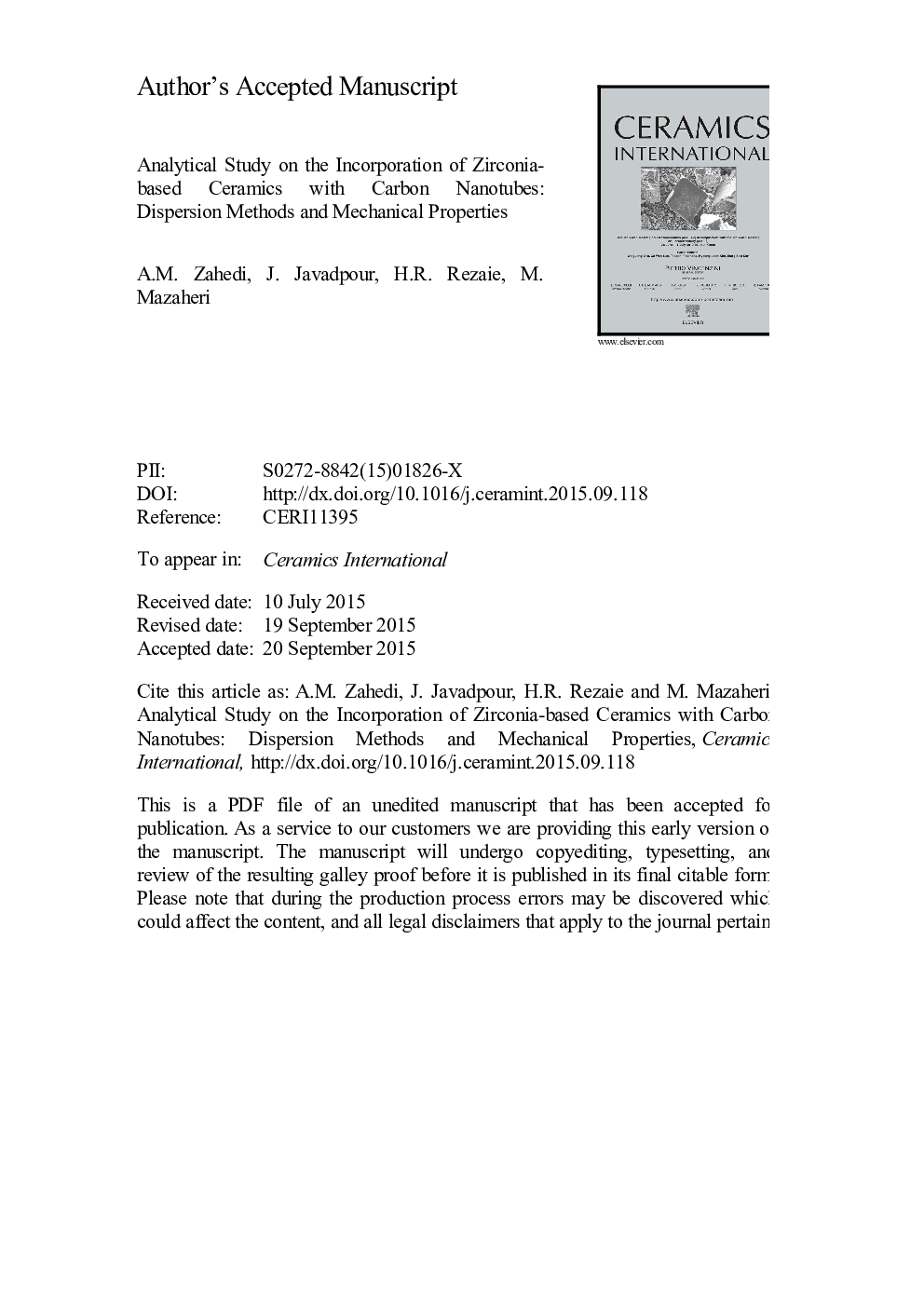| Article ID | Journal | Published Year | Pages | File Type |
|---|---|---|---|---|
| 10624508 | Ceramics International | 2016 | 23 Pages |
Abstract
Different volume fractions (1.3, 2.6 and 7.6 Vol%) of carbon nanotubes (CNTs) were dispersed within an 8Y TZP matrix using two different methods of dispersion in wet and dry media. Dispersed specimens were subsequently processed by spark plasma sintering (SPS), and the effects of the dispersion method, as well as the processing conditions on the densification process were studied. Sintering studies demonstrated that the dry dispersed sample could hardly surpass the relative density of 0.94 after being soaked at 1350 °C for 10 min. Even a 50 °C increase in the sintering temperature of the SPS (1400 °C) did not result in a higher sintered density for dry dispersed specimens. On the other hand, the wet dispersed sample showed a sintered density close to 0.98. Scanning electron microscopy (SEM) images revealed the presence of entangled CNT pockets within the microstructure of composite samples prepared via the dry dispersion method, while CNTs were observed to be homogenously distributed in the fracture surface of the specimens prepared by the wet method. Moreover, sintering studies disclosed higher densification kinetics for the wet dispersed composites. Maintenance of CNTs through the SPS process was confirmed by using transmission electron microscopy (TEM) and Raman spectroscopy. Mechanical properties (hardness and fracture toughness) of the specimens were also evaluated through a micro-indentation test. Opposite to the hardness of the composites, their indentation fracture toughness showed an ascending trend as a function of the CNTs׳ volume fraction. SEM images revealed crack bridging as the major mechanism hindering crack propagation.
Related Topics
Physical Sciences and Engineering
Materials Science
Ceramics and Composites
Authors
A.M. Zahedi, J. Javadpour, H.R. Rezaie, M. Mazaheri,
